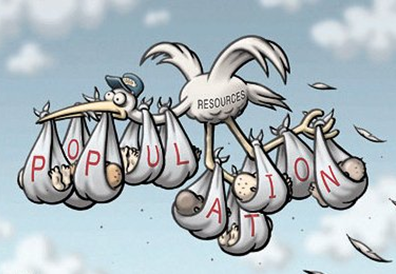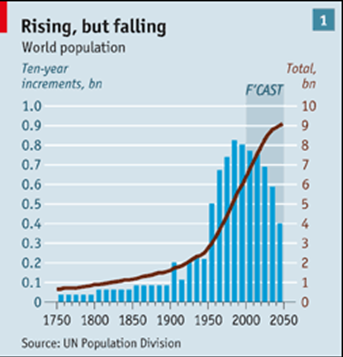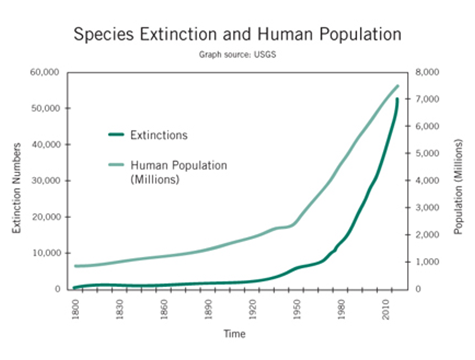
Population of our earth was 1 billion, taking all the history of human beings to achieve this mark. But after two centuries, the population of this planet reached to 6 billion, with half of this population being living in urban areas. The impact of that great rise of population on our environment is striking through different ways like extinction of species, high rates of soil erosion and greenhouse gases emission. The human needs are increasing by time and natural resources are ending with time, but how human needs will be fulfilled with environmental protection?
Overpopulation problems are adding directly to many environmental issues which human beings are facing today and it’s a fact that more human beings in the world, more energy consumption will increase. Human living needs more food, water and other natural resources, energy resources are vital among them. This growth of population is expected to be 10.1 billion in 2100 and about 9.5 billion in 2050. A big increase in population will be from those countries which have been ranked on top on high fertility countries, and only 39 of them are from Africa, four from Latin America, six from Oceania and nine countries of Asia.
Environment and population go hand by hand and most of the problems associated with our environment are because of overpopulation. Population would not be a big issue for us if we had unlimited flow of natural resources. The overpopulation and environment is sad story which should be shared for awareness among the people of developed countries to compromise and help the developing and undeveloped countries. It has been already claimed by US census Bureau of International database that it would not be able to hold the most populated countries status.

China will be surpassed by India with approx 1.8 billion population in next two decades and would directly add more pressure to the natural resources depletion. One way to lessen the impact of overpopulation is by starting different educational campaigns worldwide which should aware the people about family planning, natural environment protection, resources utilization and contribution of mankind and birth control techniques.
China has already implemented one-child policy to lessen its population growth with its current population rising to 1.4 billion by 2015. Fewer children born will decrease the demand for resources which have been squeezed with current rising demand. A better alternative is adopt the eco-friendly technology and all the living things, our bath, washing, gadgets use, vehicles and even eco-friendly cosmetics and home décor. It would be difficult to tell families to not born any more babies, we still efforts can be made to stop the increasing dilemma to great extend.
Global warming is major cause because of increasing population ratio. The energy production to support the human living causes greener house gases in atmosphere. The use of more vehicles on planet creating more pollution and consumption of energy resources, directly effecting the petroleum resources and they would end soon. Some scientists fear that global warming will lead to rising sea levels and extreme weather conditions in the future. In order to support the growing population, forests are being destroyed at an alarming rate. Most of the nations are cutting their wildlife for more construction material to be brought from trees and creating more space for rooming, but this will effect wildlife and green natural life.
How we would invest for our needs and future requirements without further depletion of resources and ensuring that life support services will not affect our natural environment. The models of today environment protection are more about creation of pockets and then protected wilderness. According to a report about natural resources depletion, only 10 percent of the land comprises the natural resources. These remaining natural resources are also subject to human needs and pressure to end. This is clear that such strategy will protect only 5 percent of resources on our planet and it will not be enough to fulfill the life supportive services.
We need the major life supporting services to be sustained like crop pollination, flood control, water purification and stabilization of climate which people need. The population size is one of the major factors to measure the environment devastating causes. Although it’s also true that because of education and contraception, now world fertility rate has been dropped by 4 children per woman. Now this rate has been left at 2.7 children per woman in 2000s and all the credit is because of health professionals and education which have brought awareness among the people. The modern conception has been raised to 60 percent from 10 percent in 1960s.

The population fertility is also associated directly with development level. Now when population of some nations has been living on less than $2 per day, it is affecting the fertility rate to be low. However with a growth in per capita income, the growth in population has been declined. It shows that population of the nations is also effecting with increasing wealth. When wealth increases, fertility rate has been found decreasing. The nations and individual wealth is also correlated with contraceptive use.
Data results of family planning programs have been showing that strong support of local and federal government can support in improvement of contraceptive services. Population is only one factor in analyzing the environmental impacts and if we add other multipliers like consumption per an individual, energy supply, unit of consumption, food and other resources which human being demands, we get a great figure.

Creation of nature preserves and family planning strategies have been developed for protection of environment, but it is not sufficient to sustain the life supportive systems accurately and effectively. The great challenge we have today is to develop approaches for 21st century human needs with protection of their environment. The resources are directed on ways and pioneering efforts are underway to ensure properly that birthrate is planned along with living policies which should match the human activities friendly to the natural environment and resources. There is a long distance to pass and still much great challenging time for civilization.

